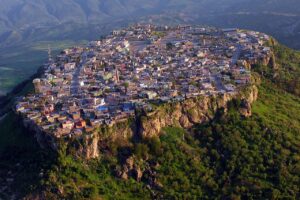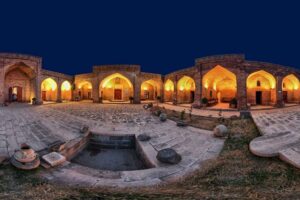
Who are the Kurds? History, Culture, and Challenges
The Kurds: History, Culture, and Challenges
Embark on a fascinating exploration of the Kurdish people’s rich history, diverse culture, and the contemporary obstacles they bravely confront. Discover a story of resilience, diversity, and unwavering determination.
Who are the Kurds?
The Kurds are an ethnic group primarily located in the Middle East, known for their distinct language and culture.
What is the historical origin of the Kurds? Where do they come from? What were some of the historical events and empires that influenced the Kurds’ history?
Historically, the Kurds are considered to belong to the Iranian branch of the Indo-European people. Their history can be traced back to the kingdoms of Mitanni, Kassites, and Hurrians in the mountainous areas between the Iranian plateau and the headwaters of the Euphrates.
When did the Medes play a significant role in Kurdish history?
In the 7th century BC, the Medes, often likened to the Gauls by the French, established an empire that conquered Assyria and extended its rule across Iran and central Anatolia, marking the start of the Kurdish era.
How did the Kurds respond to Arab-Muslim invasions?
The Kurds initially resisted Arab-Muslim invasions, but over time, they converted to Islam without becoming Arabized. This resistance lasted for about a century, and even the mother of the last Umayyad Caliph, Marwan Hakim, was Kurdish.
When did the first Kurdish states emerge? What was the role of Kurdish leaders and dynasties in shaping their history?
From the 9th century onwards, the Kurds began to assert their own political power. In 837, a Kurdish lord named Rozeguite founded the town of Akhlat, establishing a virtually independent principality within the caliphate.
How did the Kurds become integrated into the Ottoman Empire?
Kurdish leaders, seeking to secure their autonomy, entered into an agreement with the Ottoman Empire. In exchange for recognizing the Ottoman sultan’s supremacy, they were granted broad autonomy over their territories. This arrangement lasted for about three centuries.
What were the consequences of the Kurdish uprisings in the 19th century?
The 19th century saw Kurdish uprisings aimed at creating a unified Kurdistan. However, these movements faced challenges such as interference from major powers and internal divisions, ultimately leading to their failure.
How did the Kurds approach the aftermath of World War I?
After World War I, the Kurds were divided over their future. Some sought cultural and administrative autonomy within the Ottoman Empire, while others pushed for total independence. These divisions played a role in the international consideration of the Kurdish question.
What was the outcome for Kurdistan in the 1920s?
By the end of the 1920s, the historical region of Kurdistan was divided among four countries: Turkey, Iran, Iraq, and Syria. This marked a departure from its long history of cultural autonomy.
The journey through Kurdish history reveals a resilient and culturally rich community that has navigated through centuries of challenges. The Kurds’ story continues to evolve, and their pursuit of recognition and autonomy remains an integral part of the ever-changing dynamics of the Middle East.
Photo: AFP
Who are the Kurds ?. Institutkurde.org. (n.d.). https://www.institutkurde.org/en/info/who-are-the-kurds-s-1232550927



